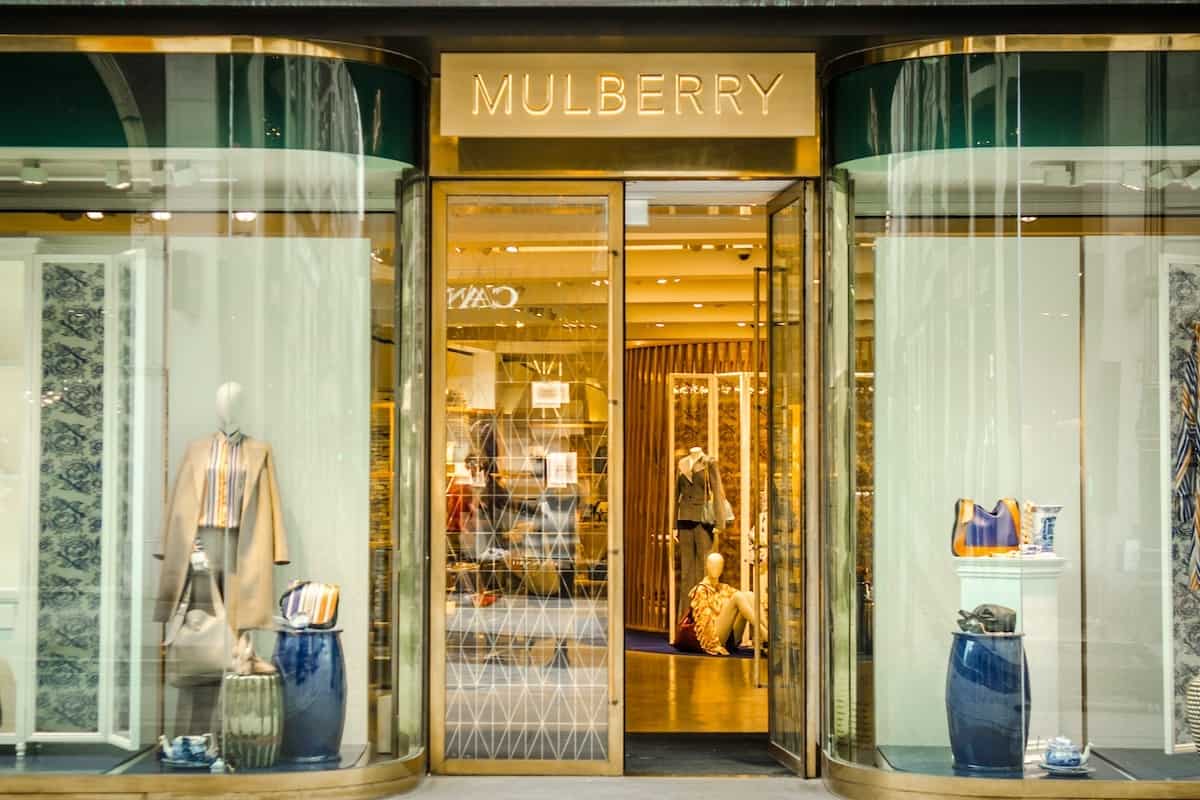SAINSBURY’S FULL-YEAR RESULTS
Sainsbury’s reported revenues up but profit down on the same day that it announced its plans to merge with Asda. Sales in the year to March 18 2018, the first full year following its acquisition of Argos, came in at £28,456m, including fuel but excluding VAT. That’s 8.5% up on the same time last year, boosted by that acquisition, which completed in autumn 2016. Like-for-like sales, which strip out the effect of that acquisition, and of store openings and closures, rose by 1.3%. Pre-tax profits of £409m fell by 19% from £503m last time.
Chief Executive Mike Coupe said: “We have accelerated the rate of change and innovation across the group and more customers are choosing to shop with us than ever before as a result.” He added: “We are focused on making Sainsbury’s a destination of choice. We are clearly differentiated by the quality of our food and we have recently invested a further £150 million to lower prices. General merchandise and clothing are both performing ahead of the market and, in response to great customer feedback and financial returns, we are opening Argos stores in our supermarkets faster than we originally planned.” He said the business had made £540m in savings over the last three years, beating a target of £500m that it would again target in the three years to 2021.
So far, it has opened 191 stores in Sainsbury’s supermarkets, including 37 in Sainsbury’s Local convenience stores. It aims to have 250 open by next March and 280 by the end of 2018/19. Tu clothing can now be ordered via the Argos website for home delivery or collection from more than 1,000 Argos stores and collection points.
The Argos Fast Track hub and spoke model enables the general merchandise retailer to deliver to 90% of postcodes in four hours. Over the full-year, Fast Track home deliveries were 28% ahead, while in-store collections rose by 45%.
AMERICAN APPAREL RELAUNCHES
American Apparel has reopened in the UK – but this time it’s an online-only business.
The retail brand has returned as a pureplay 18 months after its previous owners went into administration in November 2016. Back then, an offshoot of the original North American business of the same name and operated by subsidiary companies American Apparel (UK) Ltd and American Apparel (Carnaby) Ltd, was a Top350 retailer in IRUK Top500 research and had 13 stores in the UK. It failed at a time when its US parent company was being sold and stopped shipping to its UK subsidiaries, which were not part of that sale. The US business subsequently failed and Canadian company Gildan bought its assets in 2017, launching a US website last year.
Now the American Apparel brand has returned to the UK with the launch of a new website, where the emphasis is ethical and sustainability issues, featuring ‘ethically made –sweatshop free’ banner and case studies on the people who work for its parent company in central America, the Dominican Republic and Bangladesh.
Ed Bussey, Chief Executive and Founder of Quill, commented: “Following its collapse in 2016, American Apparel’s return to the UK as an online-only store shows that even the most troubled of brands has the potential to rise from the ashes. Whilst the company’s new digital focus seems an astute choice given the ongoing footfall and spending challenges faced by the high street, if American Apparel are to successfully relaunch, they will need to be absolutely uncompromising about their online customer experience.”
MOTHERCARE REPORTS
Mothercare has reported growing online sales – which accounted for 49% of all transactions in the fourth quarter of its financial year – but falling in-store footfall and sales.
The retailer for parents of young children, ranked Top50 in IRUK Top500 research, said group sales fell by 0.3% in the 12 weeks to March 24, and by 1.9% over the full year. Total UK sales fell by 5.6% in the quarter and 4.8% in the full year in tandem with floor space, which fell by 10.7% over both periods, while UK like-for-like sales which strip out the effects of store openings and closures, were down by 2.8% in the 12 weeks to March 24, and by 1.3% over the full year.
Online sales rose by 2.1% in the fourth quarter and 1.2% in the year. Stronger online growth came via the website (+7.2% Q4/+2.8% FY) but sales via in-store iPads fell (-4.8% Q4/-1.1%FY).
International sales were also down: by 11% in the quarter and 5% in the year.
Chief Executive David Wood said group performance was in line with previous guidance. “The UK retail trading environment remained relatively muted in the quarter, with a continuing trend of lower footfall in stores, though there was an encouraging return to growth online, with website sales in particular growing at 7.2%,” he said. “In this competitive climate, promotional activity has been necessary to stimulate customer demand.”
He added: “We continue to make good progress in reducing the size of our UK store estate in response to changing consumer preferences and in reducing our central cost base, but our central focus must be customers and their experience, securing Mothercare’s reputation as the number one specialist for parents.”
FAST GROWTH AT BOOHOO
Boohoo.com said group revenue of £579.8m in the year to February 28 was 97% up on the previous year, while pre-tax profits of £43.3m were 40% ahead. UK sales of £355.6m were 95% up on last time, while US sales of £92.7m were 129% ahead, and rest of Europe sales of £66.3m were 73% up. Within the group, boohoo posted revenues of £374.1m, a 32% rise on last time, PrettyLittleThing revenue of £181.3m, 228% up on last time, and Nasty Gal posted revenue of £24.4m in its first full year of trading.
Joint Chief Executives Mahmud Kamani and Carol Kane said: “Against a backdrop of difficult trading in the UK clothing sector, the group continued to perform well, gaining market share in the expanding online sector. Our international business showed higher growth rates, and we are pleased with its gathering momentum.
“Our strategy will remain focused on providing the best fashion at great prices coupled with excellent customer service. To this end, we have a plan of continuous investment in systems and technology to ensure we offer an optimal online shopping experience. International expansion will continue as we add more country-specific websites, refine our brands’ customer proposition and raise brand awareness through marketing and social media. Our extended distribution centre, which will have a significant element of automation to drive efficiency savings, is scheduled for operational use in early 2019.”
JD SPORTS ON MULTICHANNEL
JD Sports Fashion has said that a multichannel approach was a key part of its record performance in a year in which turnover grew by a third and pre-tax profits by almost a quarter.
The sports, fashion and outdoor retailer reported revenues of £3.2bn in the year to February 3, 33% up on the same time last year. Pre-tax profits of £294.5m were 24% up on last time. Online sales across Europe grew by more than 30%.
Executive Chairman Peter Cowgill said: “This is an excellent result, demonstrating our capacity for continuing growth in both existing and new markets and the strength of our offer in store and online.”
He added: “The investments we have made over a number of years in developing our
multichannel proposition and driving improved buying, merchandising and retail discipline have ultimately led to the creation of a world class sports fashion business which combines the best of physical and digital retail on an increasingly global scale.
“We are very encouraged by the progress that we are making internationally and we continue to look for further opportunities to bring our dynamic multichannel proposition to new markets around the world with the support of our key brands.”
The retailer points to its “best in-class multichannel experience with breadth, newness and exclusivity” that is “consistent across all channels and in an expanding network of international markets”.
The business is underpinned by a multichannel infrastructure, says JD Sports, which gives customers from different countries access to a universal stock pool. This, it says, enables them “to shop with us in the channel and at the time of their choice”.
The retailer expanded further in Europe (+56 stores) and Asia Pacific (+9 stores). It has also agreed to buy US multichannel retailer The Finish Line, which has 931 stores in that market. This, it says, is an opportunity to bring its “dynamic multichannel proposition” to a new market.
CUSTOMERS UP AT TESCO
Tesco has said its stronger brand had attracted more customers, boosting sales and profits in turn. The supermarket, an Elite retailer in IRUK Top500 research, reported revenue of £57.5bn in its 2017/18 full-year, 2.8% up on the previous year. Pre-tax profits of £1.3bn were 795.2% up on last time.
Chief Executive Dave Lewis said: “This has been another year of strong progress, with the ninth consecutive quarter of growth. More people are choosing to shop at Tesco and our brand is stronger, as customers recognise improvements in both quality and value.
“We have further improved profitability, with group operating margin reaching 3% in the second half. We are generating significant levels of cash and net debt is down by almost £6bn over the last three years. All of this puts us firmly on track to deliver our medium-term ambitions and create long-term value for every stakeholder in Tesco.
“I am delighted to have completed our merger with Booker, and we are moving quickly to deliver synergies and access new growth, making the most of the complementary skills in our combined business.”
Tesco said 260,000 more customers had bought from Tesco over the period. It said its monitoring of brand perception had improved by 2.7 points, while perception of value had risen by 2.0 points.
Online grocery sales were up by 5.1% during the year, with higher order numbers and average basket sizes, while its Express convenience stores saw sales growth of 2.7%, and large stores of 1.9%.
The retailer released a contactless clubcard during the period to 18m clubcard members. It said the new Tesco Pay+ app for its UK stores had so far been downloaded 458,000 times. It also rolled out a same-day online grocery delivery service with the capacity to reach, it said, 99% of UK postcodes




